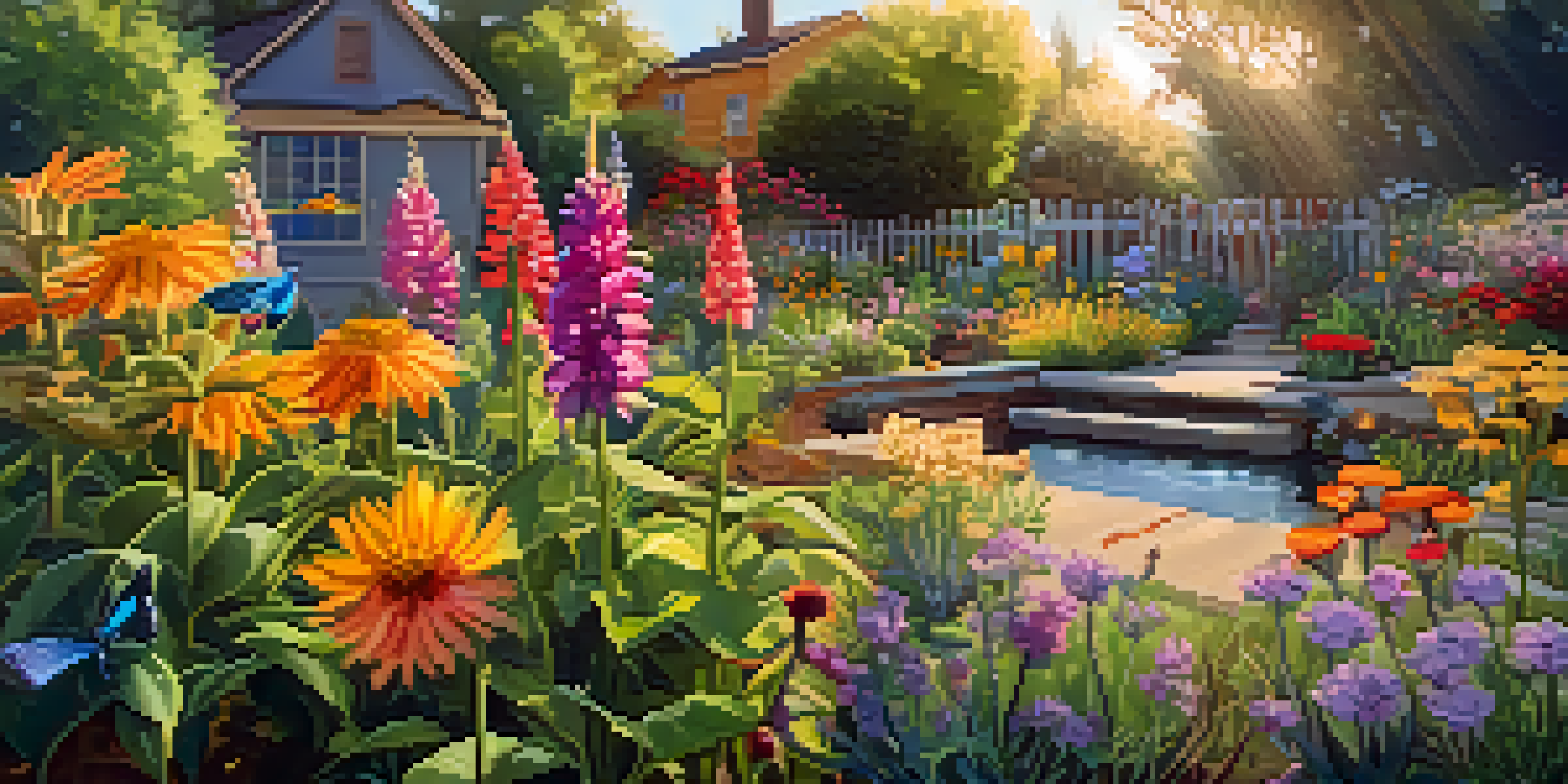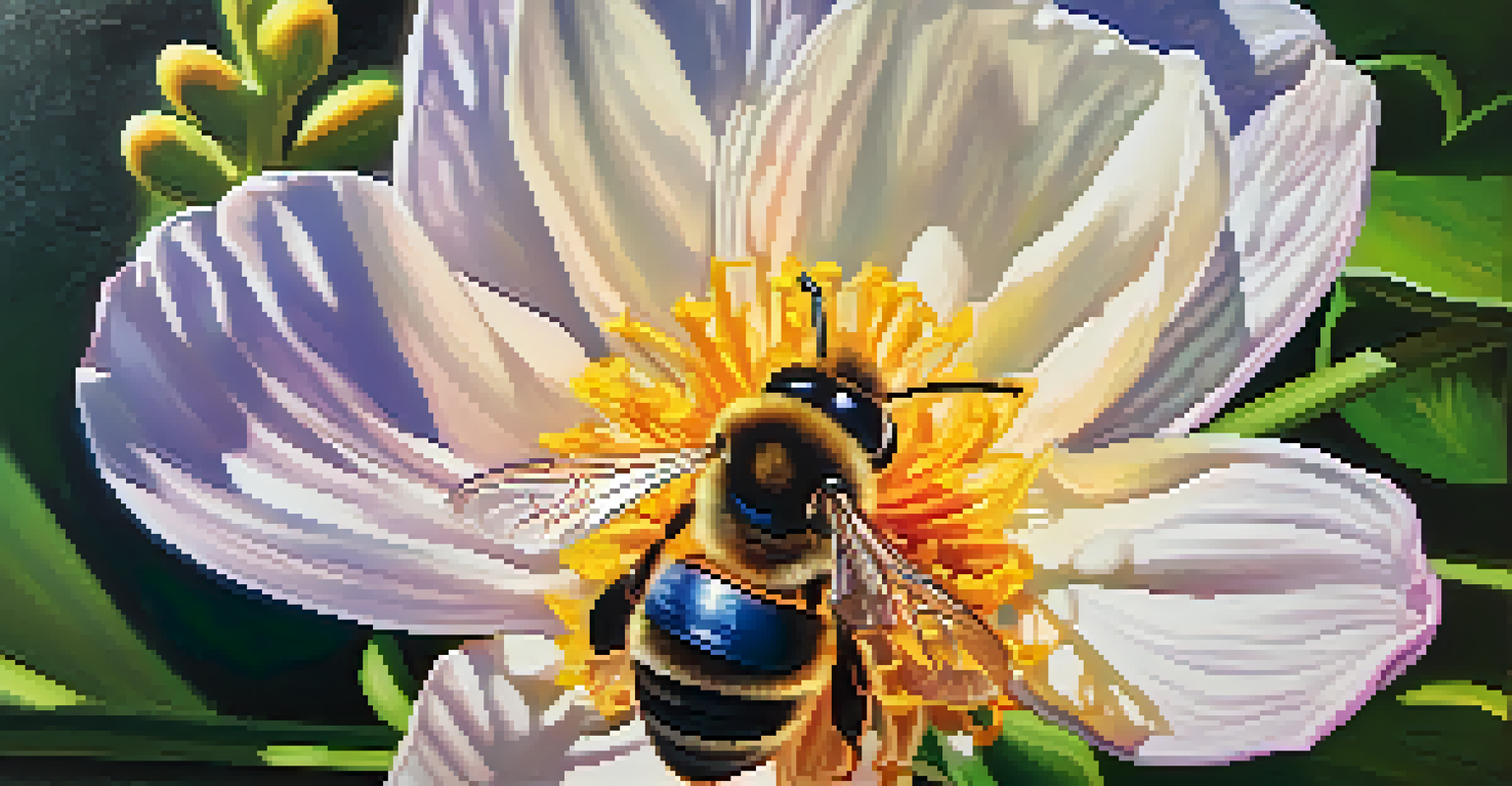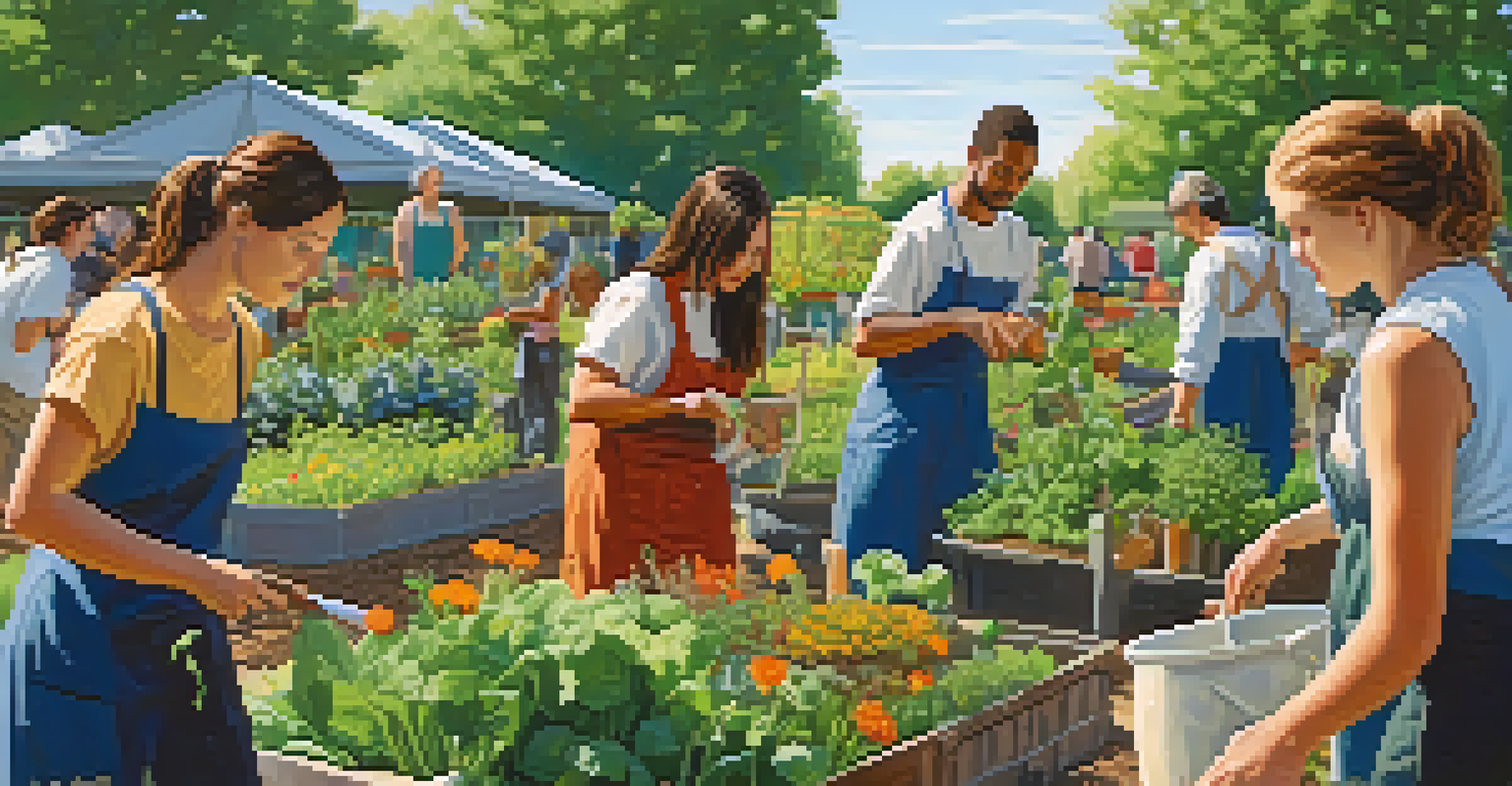Gardening for Biodiversity: Supporting Local Ecosystems

Understanding Biodiversity and Its Importance
Biodiversity refers to the variety of life forms in a given ecosystem, from plants and animals to microorganisms. This diversity is crucial because it helps ecosystems function effectively, providing essential services like pollination, pest control, and climate regulation. Without a rich tapestry of species, ecosystems can become unstable and less resilient to changes.
The future will be green, or not at all.
When you think about it, biodiversity can be likened to a well-orchestrated symphony. Each species plays a unique role, contributing to the overall harmony of the environment. If one instrument goes missing, the music becomes less vibrant, just as an ecosystem suffers when a species disappears.
Supporting local biodiversity through gardening not only benefits the environment but also enriches our lives. Engaging with nature can enhance our mental well-being, providing a sense of peace and connection to the world around us.
Creating a Biodiverse Garden: Essential Principles
To foster biodiversity in your garden, start by incorporating a variety of native plants. Native species are adapted to the local climate and soil, making them more resilient and supportive of local wildlife. They provide food and habitat for pollinators, birds, and other beneficial critters, creating a thriving ecosystem right in your backyard.

Think of your garden as a buffet for local wildlife. By offering a range of plants that bloom at different times throughout the year, you ensure that there's always something to attract pollinators and other beneficial insects. This continuous food source helps sustain the ecosystem, promoting a healthier environment.
Biodiversity Enhances Ecosystems
A rich variety of life forms supports ecosystem stability and resilience, providing essential services like pollination and climate regulation.
Moreover, consider adding features like water sources, compost bins, or even small brush piles. These elements not only enhance biodiversity but also create microhabitats that support various species, encouraging a balanced and self-sustaining ecosystem.
The Role of Pollinators in Biodiversity
Pollinators, such as bees, butterflies, and hummingbirds, play a vital role in maintaining biodiversity. They facilitate the reproduction of many plants by transferring pollen, which is essential for fruit and seed production. Without these creatures, many of our favorite fruits, vegetables, and flowers would struggle to thrive.
Biodiversity is the greatest treasure we have, its diminishment is to be prevented at all cost.
Think of pollinators as the gardeners of the plant world. They help to ensure that plants can produce the next generation, much like we tend to our gardens to ensure they flourish. By creating a welcoming environment for these vital creatures, we can support not only our gardens but also the broader ecosystem.
You can attract pollinators by planting diverse flowers in clusters and avoiding pesticides, which can harm these beneficial insects. Consider incorporating plants with varying bloom times, providing food throughout the seasons, ensuring pollinators have a constant source of nourishment.
Incorporating Edibles to Boost Biodiversity
Growing edible plants in your garden can significantly enhance biodiversity while providing fresh produce for your table. Edible gardens attract a variety of beneficial insects and wildlife, creating a dynamic ecosystem. Plus, the act of growing your own food connects you more deeply with nature and the environment.
Imagine stepping into your garden and harvesting ripe tomatoes, crisp lettuce, or fragrant herbs. Not only are you enjoying the fruits of your labor, but you’re also supporting local pollinators and wildlife that depend on these plants for sustenance. This symbiotic relationship enriches your gardening experience.
Gardening Boosts Local Wildlife
Creating diverse gardens with native plants and habitat features attracts beneficial insects and wildlife, enriching both the environment and our lives.
When selecting edible plants, opt for a mix of vegetables, herbs, and fruits that can thrive in your local environment. This diversity in your garden will not only boost biodiversity but also create a more resilient and productive garden overall.
Natural Pest Control: A Biodiversity Approach
One of the beautiful aspects of a biodiverse garden is its ability to regulate pests naturally. By attracting beneficial insects like ladybugs and lacewings, you can create a balance that keeps harmful pests at bay. This method reduces the need for chemical pesticides, promoting a healthier environment.
Think of beneficial insects as the guardians of your garden. They help control pest populations, much like how a balanced ecosystem keeps everything in check. When you embrace biodiversity, you're not just protecting your plants; you're also supporting the delicate web of life that surrounds us.
To encourage these helpful insects, plant a variety of flowers that provide nectar and pollen. Also, avoid using synthetic pesticides, which can harm both beneficial and harmful insects alike, ensuring that your garden thrives naturally.
Creating Habitat for Wildlife in Your Garden
In addition to plants, providing habitat features can significantly bolster biodiversity in your garden. Consider adding birdhouses, bee hotels, or even simple brush piles to offer shelter for various animals. These habitats encourage wildlife to visit and take up residence, enriching the ecosystem.
Imagine your garden as a cozy neighborhood for wildlife. By incorporating features like water sources and nesting areas, you create safe spaces for birds, insects, and other creatures. This not only supports local biodiversity but also brings life and activity to your garden.
Community Gardens Foster Collaboration
Participating in community gardening strengthens local biodiversity and builds connections among neighbors through shared green spaces.
Additionally, maintaining a naturalistic approach in your garden—such as leaving some areas a bit wild—can provide essential habitats for a variety of species. This balance between cultivation and wildness creates a thriving ecosystem that supports both plants and animals.
Participating in Community Gardening for Biodiversity
Community gardening is a fantastic way to boost biodiversity while fostering connections with your neighbors. By working together to create shared green spaces, communities can enhance local ecosystems and provide habitats for a variety of species. This collaborative effort can also inspire others to embrace sustainable gardening practices.
Think of community gardens as a patchwork quilt of biodiversity. Each plot contributes to the overall health of the environment, and the diversity of plants encourages a wide range of wildlife to visit. This collective impact can lead to healthier ecosystems and stronger community ties.

Joining or starting a community garden can be a rewarding experience. Not only do you contribute to local biodiversity, but you also get to learn from others, share resources, and enjoy the fruits of collective labor—all while making new friends along the way.